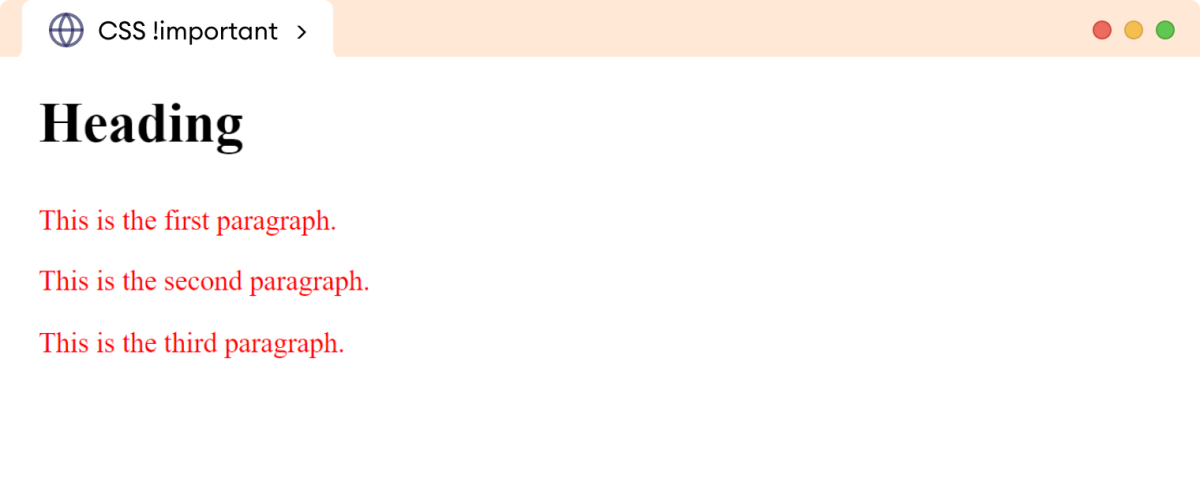The !important keyword is used to increase the priority of a CSS property. For example,
/* HTML */
<p id="paragraph">This is a paragraph.</p>
/* CSS */
p#paragraph {
color: green;
}
p {
color: blue!important;
}
Browser Output

Here, we have two selectors (ID selector and element selector) to select and style the paragraph.
The ID selector has higher priority (specificity) than the element selector. However, the !important keyword overrides the other styles, resulting the paragraph in the blue color.
Syntax of !important
The syntax for the !important keyword is as follows:
property: value !important;
To use the !important keyword, we need to add it after the value of a CSS property.
For example, to make a p element have a red text color, we would use the following CSS:
p {
color: red !important;
}
This will ensure that the text color of the p element is red, even if there are other CSS rules that are more specific.
Priority Level in CSS
In CSS, selectors have the following priority level, from highest to lowest:
- ID selectors
- Class selectors
- Attribute selectors
- Pseudo-class selectors
- Type selectors
- Universal selectors
- Inherited styles
This means that the styles provided by an ID selector will be applied even if other selectors have also applied styles to the element.
However, when we add !important to any style, it gets the highest priority among all. This means that it overrides all conflicting CSS styles, no matter how specific they are.
Example: CSS !Important Keyword
Let's look at an example.
<!DOCTYPE html>
<html lang="en">
<head>
<meta charset="UTF-8" />
<meta name="viewport" content="width=device-width, initial-scale=1.0" />
<title>CSS !important</title>
<link rel="stylesheet" href="style.css" />
</head>
<body>
<h1>Heading</h1>
<p>This is the first paragraph.</p>
<p class="paragraph">This is the second paragraph.</p>
<p id="unique">This is the third paragraph.</p>
</body>
</html>
/* class selector */
.paragraph {
color: green;
}
/* id selector */
#unique {
color: purple;
}
/* using !important on element selector */
p {
color: red !important;
}
Browser Output

Here, all the p elements are displayed in red color.
This is because the !important keyword in the element selector overrides other higher priority rules.
Note: The !important keyword helps resolve style conflicts. However, it is not recommended for excessive use as it can complicate code debugging and maintenance